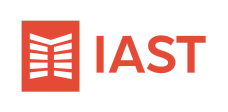Abstract
Humans have evolved in populations structured in groups that extended beyond the nuclear family. Individuals interacted with each other within these groups and there was limited migration and sometimes conáicts between these groups. Suppose that during this evolution, individuals transmitted their behaviors or preferences to their (genetic or cultural) o§spring, and that material outcomes resulting from the interaction determined which parents were more successful than others in producing (genetic or cultural) o§spring. Should one then expect pure material self-interest to prevail? Some degree of altruism, spite, inequity aversion or morality? By building on established models in population biology we analyze the role that di§erent aspects of population structureó such as group size, migration rates, probability of group conáicts, cultural loyalty towards parentsó play in shaping behaviors and preferences which, once established, cannot be displaced by any other preference. In particular, we establish that uninvadable preferences under limited migration between groups will consist of a materially self-interested, a moral, and an other-regarding component, and we show how the strength of each component depends on population structure.
Keywords
Strategic interactions; Preference evolution; Evolution by natural selection; Cultural transmission; Pro-sociality; Altruism; Morality; Spite;
JEL codes
- A12: Relation of Economics to Other Disciplines
- A13: Relation of Economics to Social Values
- B52: Institutional • Evolutionary
- C73: Stochastic and Dynamic Games • Evolutionary Games • Repeated Games
- D01: Microeconomic Behavior: Underlying Principles
- D63: Equity, Justice, Inequality, and Other Normative Criteria and Measurement
- D64: Altruism • Philanthropy
- D91: Intertemporal Household Choice • Life Cycle Models and Saving
Replaced by
Ingela Alger, Jörgen W. Weibull, and Laurent Lehmann, “Evolution of preferences in structured populations: Genes, guns, and culture”, Journal of Economic Theory, vol. 185, n. 104951, January 2020.
See also
Published in
IAST Working Paper, n. 18-73, February 2018, revised October 2019
